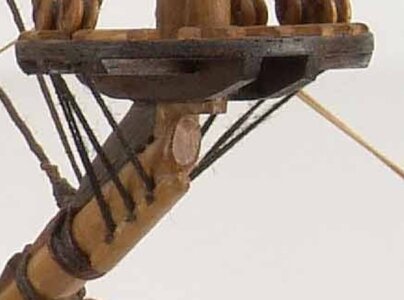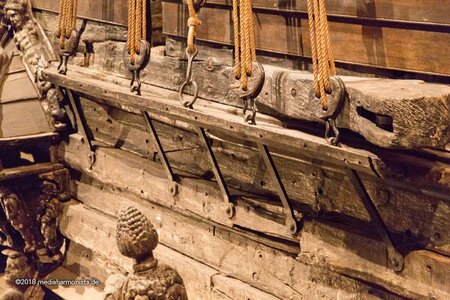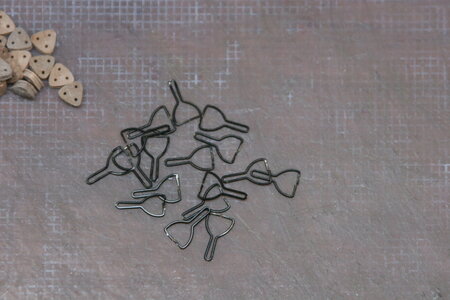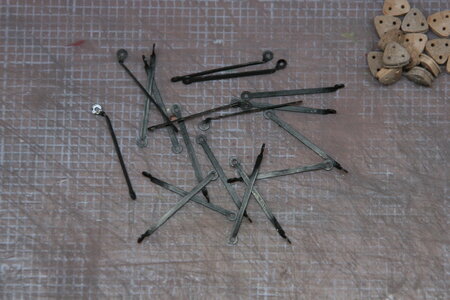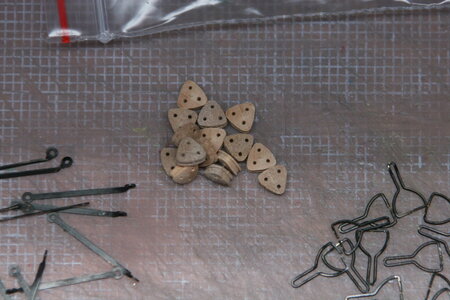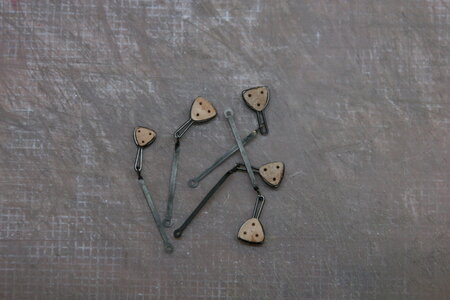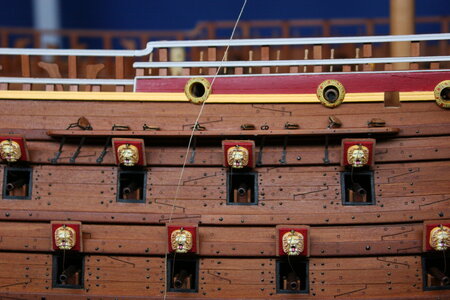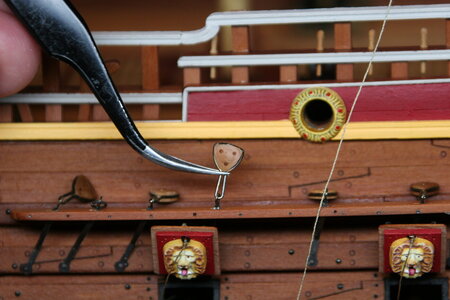That doesn't look like it, you don't want that on your ship .......Mast making continues. On the Vasa the fore and mizzen masts are a single piece of timber. The main mast is constructed from parts. The singular finest representation of this 'made mast' (in my opinion) is from our friend and fellow SOS member John (@oldflyer). I would show an image but it is posted on another forum and I'm not certain that is permitted. Anyway, he actually made the 'made mast' from its component parts and it is brilliant. I attempted nothing of the sort.
Let's begin with the goal. The main:
View attachment 269374
View attachment 269375
View attachment 269377
And the mizzen (the top masts are similar to the mizzen):
View attachment 269391
I'm sure you all noticed the pulley system. This is a curiosity on the Vasa because Dutch builders typically ran the lift lines for the yards over the top of the mast cap. English builders commonly ran the lift lines through a sheave incorporated into the hounds (cheeks? bibs? knees?) that support the crosstrees (which support the tops). On this Dutch built ship we find the English system on the fore and main masts. Go figure.
To complicate matters, on the mizzen mast and on all top masts there is a sheave right in the middle of the mast.
Before you start sending me emails I'll confess that I also installed English style hounds though the Vasa has Dutch hounds. Why would I do such a stupid thing? Mostly because I am not as good at mast making as I needed to be (the square segments are marginally undersized) and the crosstree/top needed more support than a Dutch style hound would offer. Most of this will be covered by the shrouds.
Anyway, I got out my trusty scroll saw and files and off we went...
View attachment 269378
View attachment 269383
View attachment 269382
And the mizzen...
View attachment 269379
View attachment 269380
My version of the 'made' main mast:
View attachment 269384
View attachment 269387
The three (lower) masts:
View attachment 269385
I have also completed the top masts and the top-gallant masts. And some flag poles:
View attachment 269386
I had intended to taper the yardarms before I worked on these masts but the bed extension I need for my mini-lathe is caught up in our supply chain problems.
All this current work is camouflaging the fact that I am trying to avoid making chain plates...
Thanks for stopping by!
because that is extra ordinary very beautifull. Hats off, Paul. Chapeaux!








 .
.